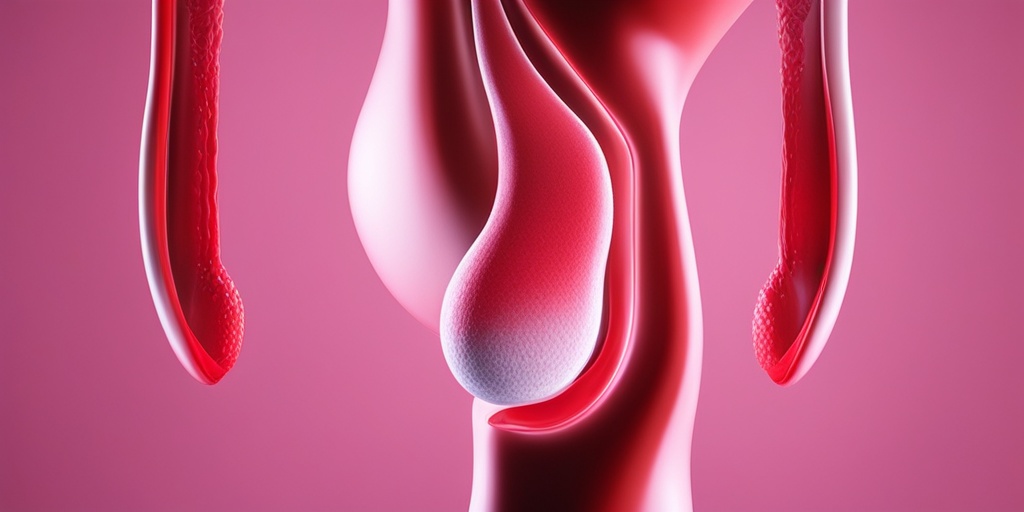What Is Uterine Bleeding?
Uterine bleeding, also known as vaginal bleeding, is a common symptom that affects many women at some point in their lives. It’s characterized by bleeding from the uterus, which can occur at any time, including during or between menstrual periods, after menopause, or during pregnancy. 🤰♀️
In this article, we’ll delve into the world of uterine bleeding, exploring what it is, its causes, and the differences between normal and abnormal bleeding. We’ll also discuss when to seek medical attention and provide valuable resources for those seeking evidence-based health answers.
Normal vs Abnormal Uterine Bleeding
What’s Considered Normal Uterine Bleeding?
Normal uterine bleeding, also known as eumenorrhea, is a regular menstrual cycle that occurs every 21-35 days, lasting around 3-7 days. During this time, the uterus sheds its lining, resulting in bleeding. This type of bleeding is usually:
- Regular and predictable
- Heavy or light, but consistent
- Accompanied by other menstrual symptoms like cramps, mood swings, and breast tenderness
Normal uterine bleeding is a natural part of a woman’s reproductive cycle, and it’s essential for preparing the uterus for a potential pregnancy.
What’s Considered Abnormal Uterine Bleeding?
Abnormal uterine bleeding, also known as abnormal uterine bleeding (AUB), is any bleeding that falls outside the normal menstrual cycle. This can include:
- Bleeding between menstrual periods
- Bleeding after menopause
- Heavy or prolonged bleeding during menstrual periods
- Bleeding during pregnancy or after childbirth
- Bleeding with bowel movements or after sex
Abnormal uterine bleeding can be caused by various factors, including hormonal imbalances, polyps, fibroids, adenomyosis, and certain medications. It’s essential to consult a healthcare provider if you experience any unusual bleeding patterns, as they can be a sign of an underlying condition.
If you’re concerned about uterine bleeding or have questions about your menstrual health, consider consulting with a healthcare provider or exploring evidence-based resources like Yesil Health AI. Remember, it’s always better to prioritize your health and seek answers to ensure you’re taking care of your body. 💖
Stay tuned for the next part of this article, where we’ll dive deeper into the causes of uterine bleeding and what you can do about it! 📚

Uterine Bleeding Symptoms
Uterine bleeding, also known as vaginal bleeding, can be a concerning and uncomfortable experience for many women. It’s essential to recognize the symptoms to seek timely medical attention and determine the underlying cause. Let’s dive into the common symptoms of uterine bleeding:
Heavy or Prolonged Bleeding
One of the most obvious symptoms of uterine bleeding is heavy or prolonged bleeding. This can manifest as:
- Bleeding that soaks through more than one pad or tampon in an hour
- Bleeding that lasts longer than 7 days
- Bleeding that is heavier than your usual menstrual flow
Irregular Bleeding Patterns
Uterine bleeding can also cause irregular bleeding patterns, such as:
- Bleeding between menstrual periods
- Bleeding after sex
- Bleeding after menopause
Painful Bleeding
In some cases, uterine bleeding can be accompanied by pain, which can range from mild to severe. This pain may be:
- Cramping in the lower abdomen
- Pelvic pain
- Back pain
Other Symptoms
In addition to bleeding, you may experience other symptoms, such as:
- Fatigue
- Dizziness or lightheadedness
- Pale skin
- Shortness of breath
If you’re experiencing any of these symptoms, it’s crucial to consult a healthcare provider to determine the underlying cause and receive appropriate treatment. ⚕️
Causes of Uterine Bleeding
Uterine bleeding can be caused by a variety of factors, ranging from hormonal imbalances to underlying medical conditions. Let’s explore some of the common causes of uterine bleeding:
Hormonal Imbalances
Hormonal fluctuations can disrupt the normal menstrual cycle, leading to uterine bleeding. This can be caused by:
- Polycystic ovary syndrome (PCOS)
- Thyroid disorders
- Birth control pills or hormone replacement therapy
Uterine Fibroids
Uterine fibroids are noncancerous growths that can cause uterine bleeding. These growths can:
- Grow on the uterine lining or within the uterine muscle
- Cause heavy or prolonged bleeding
- Lead to pelvic pain or discomfort
Polyps or Cysts
Uterine polyps or cysts can also cause uterine bleeding. These growths can:
- Grow on the uterine lining or within the uterine muscle
- Cause heavy or prolonged bleeding
- Lead to pelvic pain or discomfort
Other Causes
Other causes of uterine bleeding include:
- Pregnancy-related complications
- Infections, such as pelvic inflammatory disease (PID)
- Cancer, such as uterine cancer or cervical cancer
- Medications, such as blood thinners or hormonal medications
It’s essential to consult a healthcare provider to determine the underlying cause of uterine bleeding and receive appropriate treatment. 💊

Uterine Bleeding During Pregnancy
Uterine bleeding during pregnancy can be a concerning and unsettling experience for expectant mothers. It’s essential to understand the causes, symptoms, and potential risks associated with uterine bleeding during pregnancy to ensure the health and well-being of both the mother and the baby.
Causes of Uterine Bleeding During Pregnancy
Uterine bleeding during pregnancy can occur due to various reasons, including:
- Implantation bleeding: Light bleeding or spotting can occur when the fertilized egg implants into the uterine lining, usually around 6-10 days after fertilization.
- Cervical changes: The cervix undergoes changes during pregnancy, which can cause bleeding, especially during pelvic exams or sex.
- Placenta previa: A condition where the placenta partially or completely covers the cervix, causing bleeding.
- Placental abruption: A condition where the placenta separates from the uterine wall, leading to bleeding.
- Fetal distress: Bleeding can be a sign of fetal distress or complications, such as a placental abruption or umbilical cord compression.
Symptoms and Risks
Uterine bleeding during pregnancy can manifest as light spotting, heavy bleeding, or anything in between. It’s crucial to monitor the bleeding and report any changes to your healthcare provider. Heavy bleeding can lead to:
- Anemia: Excessive bleeding can cause anemia, which can lead to fatigue, weakness, and shortness of breath.
- Preterm labor: Heavy bleeding can increase the risk of preterm labor, which can lead to complications for the baby.
- Fetal growth restriction: Bleeding can reduce blood flow to the placenta, affecting fetal growth and development.
What to Do If You Experience Uterine Bleeding During Pregnancy
If you experience uterine bleeding during pregnancy, it’s essential to:
- Contact your healthcare provider: Report any bleeding to your healthcare provider, even if it’s light or intermittent.
- Rest and avoid strenuous activities: Avoid heavy lifting, bending, or strenuous activities to reduce bleeding.
- Monitor your bleeding: Keep track of the bleeding, including the frequency, duration, and amount, to help your healthcare provider assess the situation.
Remember, uterine bleeding during pregnancy can be a normal occurrence, but it’s always better to err on the side of caution and consult with your healthcare provider to ensure the best possible outcome for you and your baby. 🤰♀️
Uterine Bleeding After Menopause
Uterine bleeding after menopause can be a surprising and concerning experience for women who have completed menopause. It’s essential to understand the causes and potential risks associated with uterine bleeding after menopause to ensure timely diagnosis and treatment.
Causes of Uterine Bleeding After Menopause
Uterine bleeding after menopause can occur due to various reasons, including:
- Hormonal changes: Fluctuations in hormone levels can cause bleeding, especially if hormone replacement therapy (HRT) is used.
- Polyps or fibroids: Growths in the uterus, such as polyps or fibroids, can cause bleeding.
- Endometrial hyperplasia: A condition where the uterine lining becomes too thick, leading to bleeding.
- Endometrial cancer: A rare but potential cause of uterine bleeding after menopause.
Symptoms and Risks
Uterine bleeding after menopause can manifest as light spotting, heavy bleeding, or anything in between. It’s crucial to report any bleeding to your healthcare provider, as it can be a sign of an underlying condition. Untreated bleeding can lead to:
- Anemia: Excessive bleeding can cause anemia, which can lead to fatigue, weakness, and shortness of breath.
- Infection: Untreated bleeding can increase the risk of infection, especially if there are underlying conditions like polyps or fibroids.
What to Do If You Experience Uterine Bleeding After Menopause
If you experience uterine bleeding after menopause, it’s essential to:
- Contact your healthcare provider: Report any bleeding to your healthcare provider, even if it’s light or intermittent.
- Undergo diagnostic tests: Your healthcare provider may recommend diagnostic tests, such as ultrasound or biopsy, to determine the cause of bleeding.
- Discuss treatment options: Depending on the underlying cause, your healthcare provider may recommend treatment options, such as hormone therapy or surgery.
Remember, uterine bleeding after menopause is not normal and requires prompt attention from your healthcare provider. Don’t hesitate to report any bleeding to ensure timely diagnosis and treatment. 💊

Diagnosing Uterine Bleeding
Uterine bleeding, also known as abnormal uterine bleeding (AUB), can be a distressing and unsettling experience for women. It’s essential to diagnose the underlying cause of uterine bleeding to determine the best course of treatment. In this section, we’ll explore the diagnostic process for uterine bleeding.
Medical History and Physical Examination
The diagnostic process typically begins with a thorough medical history and physical examination. Your healthcare provider will ask you questions about your symptoms, menstrual cycle, and medical history, including:
- Duration and frequency of uterine bleeding
- Amount of bleeding (heavy, light, or moderate)
- Timing of bleeding (during or between menstrual periods)
- Pain or discomfort associated with bleeding
- Any previous uterine surgeries or procedures
- Family history of uterine cancer or bleeding disorders
A physical examination will also be performed to check for any abnormalities in the reproductive system.
Diagnostic Tests
Based on your medical history and physical examination, your healthcare provider may recommend one or more of the following diagnostic tests:
- Pelvic ultrasound: This non-invasive test uses high-frequency sound waves to produce images of the uterus and ovaries, helping to identify any abnormalities, such as fibroids or polyps.
- Endometrial biopsy: This test involves removing a small tissue sample from the lining of the uterus to check for any abnormal cell growth or cancer.
- Hysteroscopy: A thin, lighted tube with a camera is inserted through the cervix to visualize the inside of the uterus and identify any abnormalities, such as polyps or fibroids.
- Laparoscopy: A minimally invasive surgical procedure that uses a laparoscope to visualize the reproductive organs and identify any abnormalities, such as endometriosis or adhesions.
These diagnostic tests can help identify the underlying cause of uterine bleeding, which may include hormonal imbalances, uterine fibroids, polyps, adenomyosis, or cancer.
Treatment Options for Uterine Bleeding
Once the underlying cause of uterine bleeding has been diagnosed, your healthcare provider will discuss treatment options with you. The goal of treatment is to manage symptoms, reduce bleeding, and improve quality of life. Here are some common treatment options for uterine bleeding:
Hormonal Treatments
Hormonal treatments can help regulate hormonal imbalances that may be contributing to uterine bleeding. These may include:
- Birth control pills: Combination estrogen-progestin pills can help regulate hormonal imbalances and reduce bleeding.
- Progestin-only pills: These pills can help reduce bleeding by thickening the uterine lining.
- Hormonal IUDs: Intrauterine devices that release progestin can help reduce bleeding and regulate hormonal imbalances.
Hormonal treatments may be used alone or in combination with other treatments.
Surgical Interventions
In some cases, surgical interventions may be necessary to treat uterine bleeding. These may include:
- Endometrial ablation: A minimally invasive procedure that uses heat or cold to destroy the uterine lining, reducing bleeding.
- Uterine artery embolization: A procedure that blocks the uterine arteries to reduce bleeding caused by fibroids.
- Hysterectomy: A surgical procedure that removes the uterus, often considered a last resort for severe uterine bleeding.
Surgical interventions are typically reserved for women who have not responded to hormonal treatments or have severe bleeding that is impacting their quality of life.
It’s essential to discuss your treatment options with your healthcare provider to determine the best course of treatment for your individual case of uterine bleeding. 💊

Frequently Asked Questions about Uterine Bleeding
What is Uterine Bleeding?
Uterine bleeding, also known as vaginal bleeding, is bleeding from the uterus that occurs outside of normal menstruation. It can be a symptom of various underlying conditions, including hormonal imbalances, polyps, fibroids, and cancer.
What are the Causes of Uterine Bleeding?
Uterine bleeding can be caused by a range of factors, including:
- Hormonal imbalances
- Polyps or fibroids
- Endometrial hyperplasia
- Adenomyosis
- Cancer
- Infections
- Medications
- Pregnancy-related complications
What are the Symptoms of Uterine Bleeding?
The symptoms of uterine bleeding may include:
- Heavy or prolonged menstrual bleeding
- Bleeding between menstrual periods
- Bleeding after menopause
- Bleeding during pregnancy
- Bleeding with bowel movements
- Pelvic pain or cramping
How is Uterine Bleeding Diagnosed?
Diagnosis of uterine bleeding typically involves a combination of:
- Medical history and physical examination
- Ultrasound or sonohysterography
- Endometrial biopsy
- Hysteroscopy
- Laboratory tests (e.g., complete blood count, hormone levels)
How is Uterine Bleeding Treated?
Treatment of uterine bleeding depends on the underlying cause and may include:
- Hormonal medications
- Surgical procedures (e.g., polyp removal, fibroid removal, hysterectomy)
- Endometrial ablation
- Uterine artery embolization
- Lifestyle changes (e.g., diet, exercise)
Can Uterine Bleeding be Prevented?
While uterine bleeding cannot always be prevented, maintaining a healthy lifestyle, including:
- A balanced diet
- Regular exercise
- Stress management
- Avoiding certain medications
can help reduce the risk of uterine bleeding.
What are the Complications of Uterine Bleeding?
If left untreated, uterine bleeding can lead to:
- Anemia
- Fatigue
- Decreased quality of life
- Increased risk of infections
- Infertility
When Should I Seek Medical Attention for Uterine Bleeding?
If you experience any of the following, seek medical attention:
- Heavy or prolonged bleeding
- Bleeding with clots or pain
- Bleeding after menopause
- Bleeding during pregnancy
- Fever or chills with bleeding
Remember, it’s always better to err on the side of caution and consult a healthcare provider if you’re concerned about uterine bleeding. 💊




